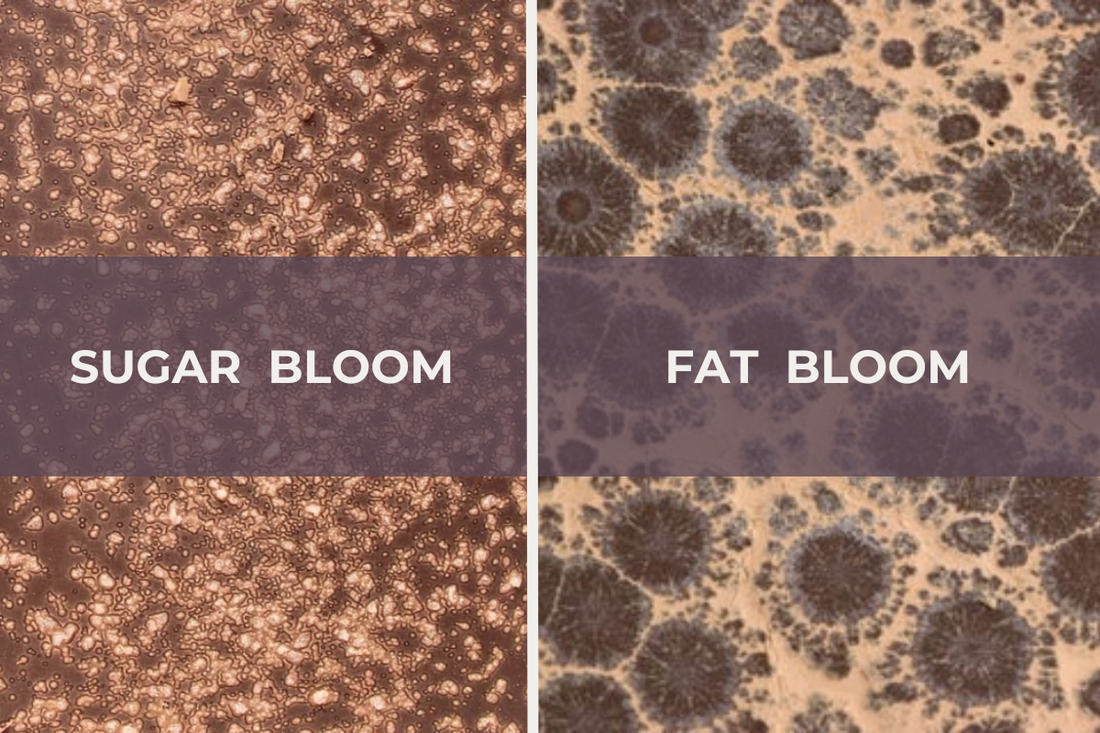Chocolate enthusiasts, rejoice! If you've ever unwrapped your favorite chocolate bar only to find it adorned with mysterious streaks or a cloudy film, fear not – your chocolate has not reached its final chapter. What you're witnessing is known as chocolate bloom, a natural occurrence that doesn't signify the end of the chocolate tale but rather a chapter in need of a little explanation.
The Mystery of Chocolate Bloom:
Chocolate bloom presents itself in two forms: sugar bloom and fat bloom. Sugar bloom occurs when moisture comes into contact with the sugar in chocolate, causing it to dissolve and recrystallize on the surface. This results in a gritty texture and a whitish appearance. On the other hand, fat bloom occurs when the cocoa butter in chocolate undergoes a phase change, often due to temperature fluctuations. This leads to the migration of cocoa butter to the surface, creating a dull, streaky appearance.
Does Bloom Mean Bad News?
Contrary to popular belief, chocolate bloom does not render your chocolate inedible or unsafe to consume. While it may affect the texture and appearance of the chocolate, it does not alter its flavor or pose any health risks. Chocolate bloom is simply a cosmetic issue that occurs when chocolate is subjected to less-than-ideal storage conditions or temperature fluctuations.
Embracing Imperfection:
Rather than viewing chocolate bloom as a flaw, consider it a reminder of chocolate's delicate nature and the importance of proper storage and handling. By storing chocolate in a cool, dry place away from direct sunlight and temperature extremes, you can minimize the risk of bloom and preserve its quality and appearance.
Rescuing Bloomed Chocolate:
If you find yourself faced with bloomed chocolate, don't despair – all is not lost. While you may not be able to reverse the bloom entirely, you can still salvage the chocolate and enjoy it in various culinary applications. Melt bloomed chocolate down and use it in baking, cooking, or as a decadent dip for fruits and treats. The flavor and versatility of chocolate remain unchanged, even in the face of bloom.
So, the next time you encounter bloomed chocolate, don't toss it aside in disappointment. Instead, embrace it as a reminder of chocolate's journey from bean to bar and the whims of nature that shape its destiny. With a bit of understanding and a dash of creativity, you can turn bloomed chocolate into a culinary masterpiece that delights the senses and sparks joy.

